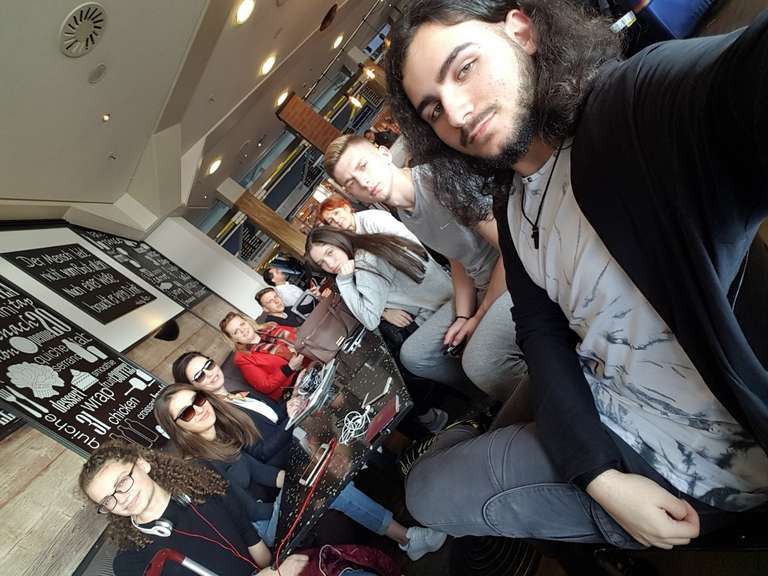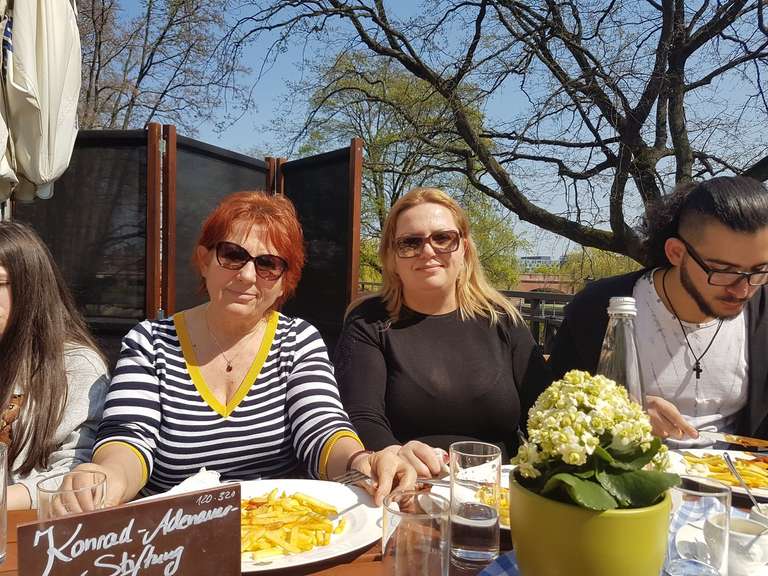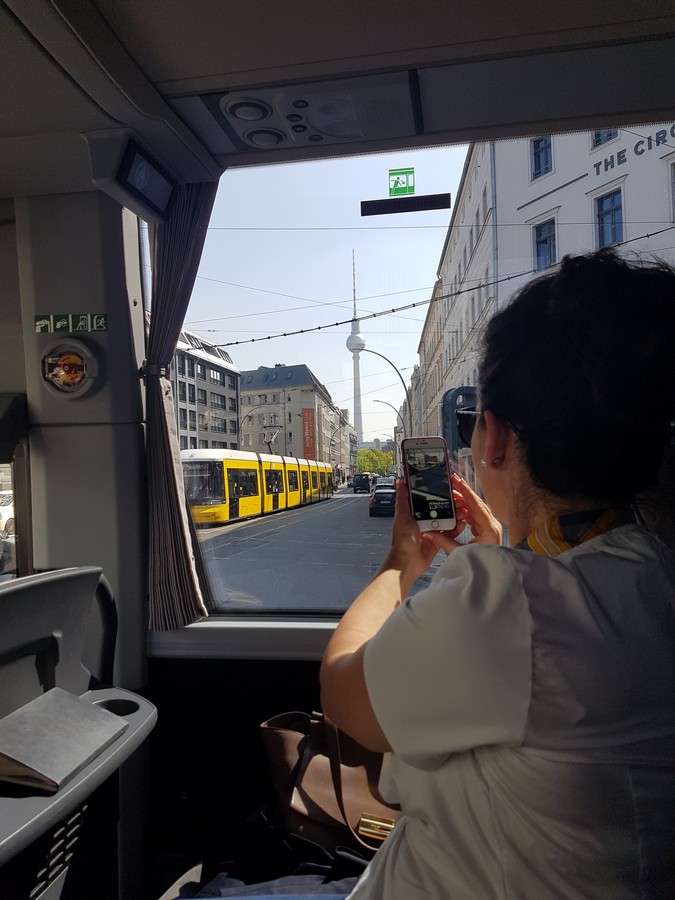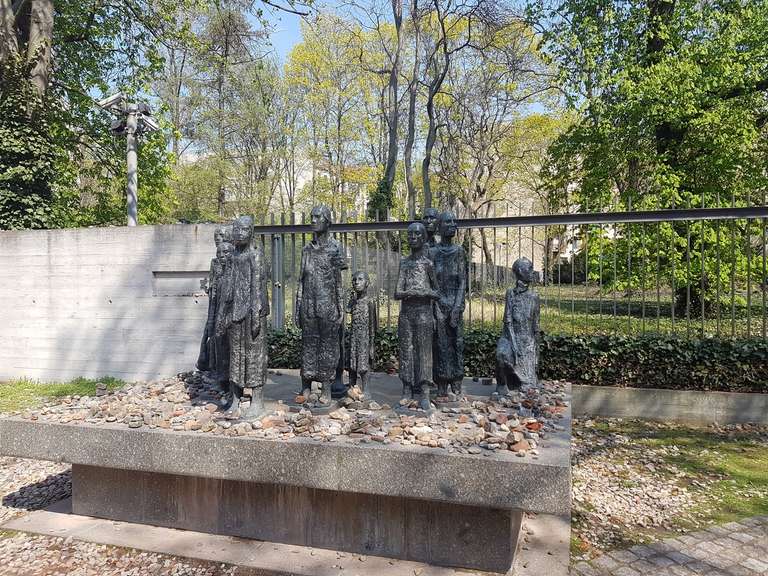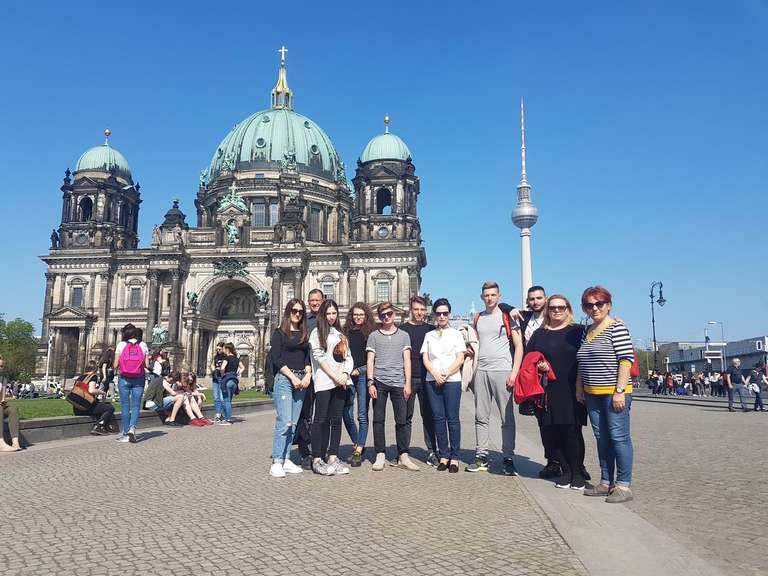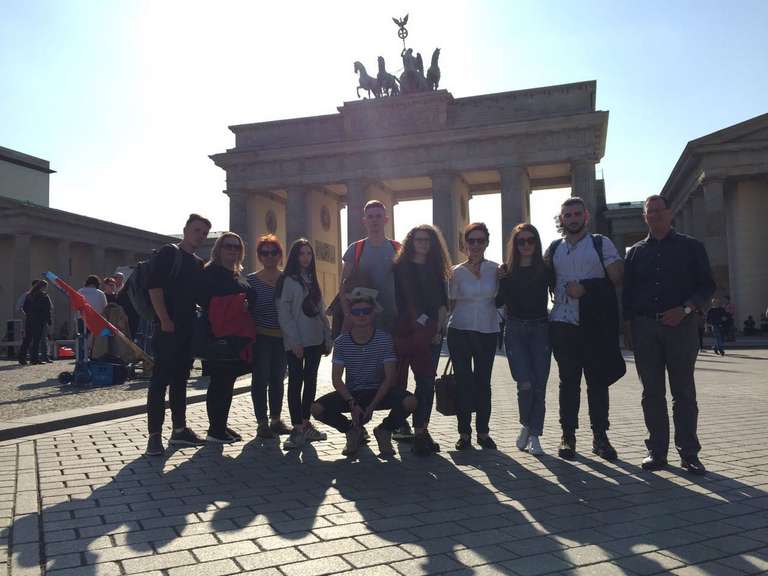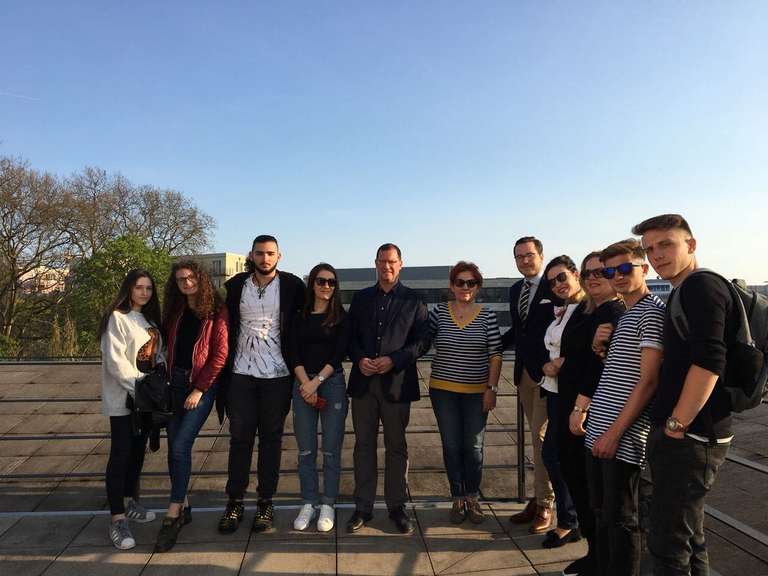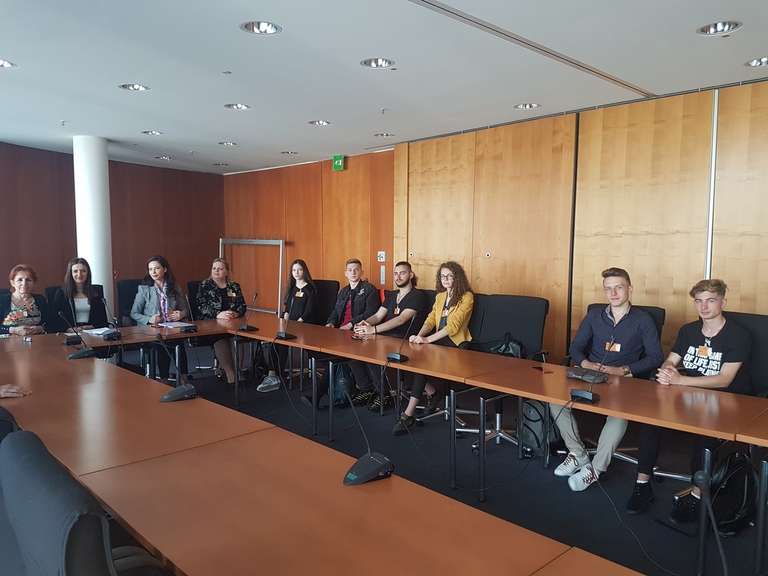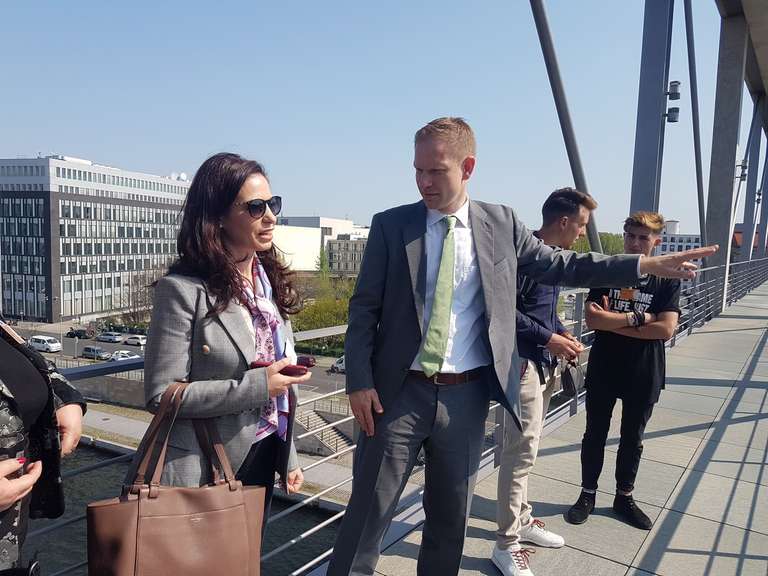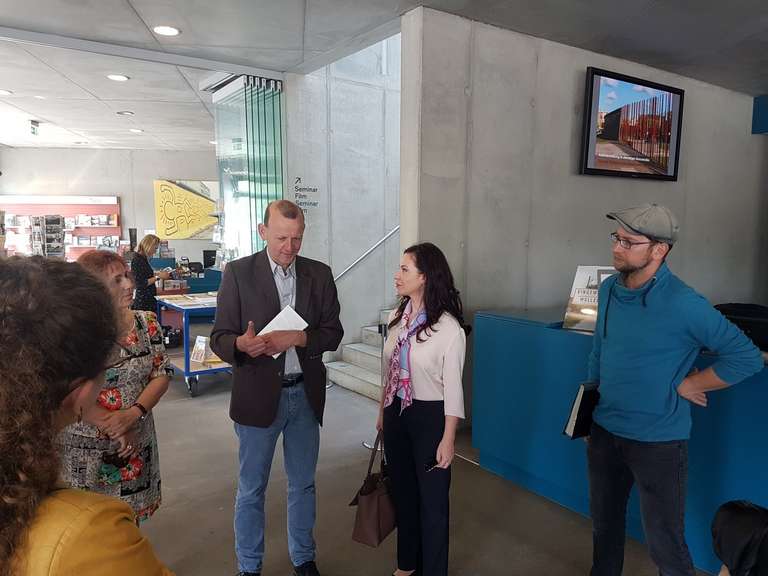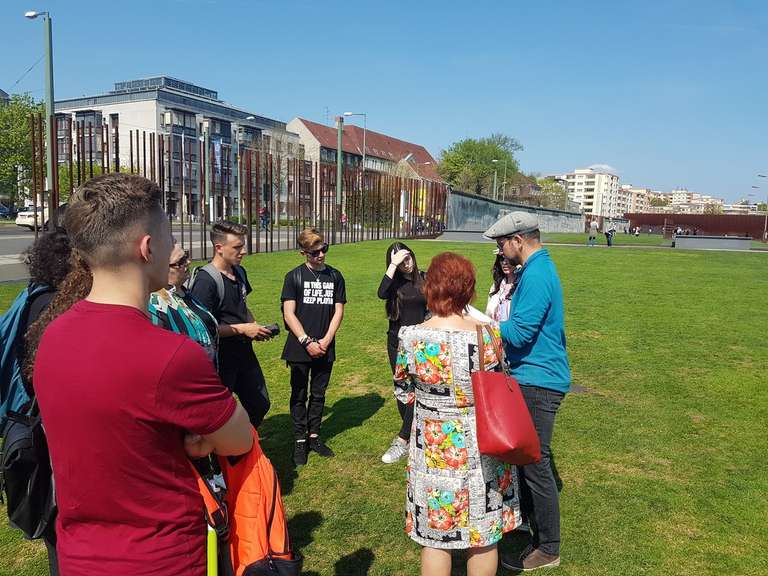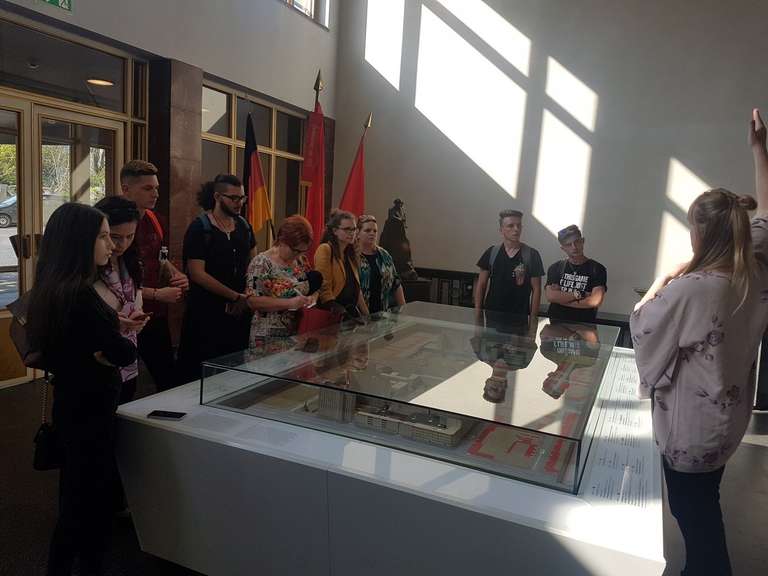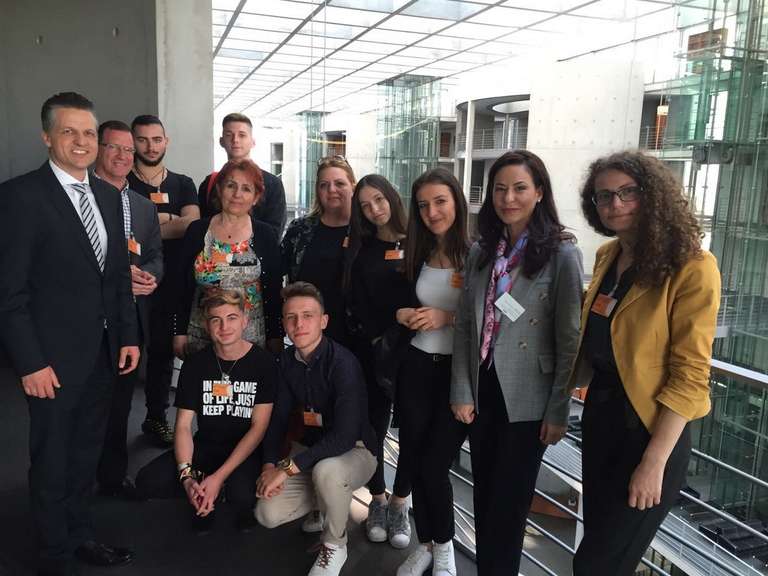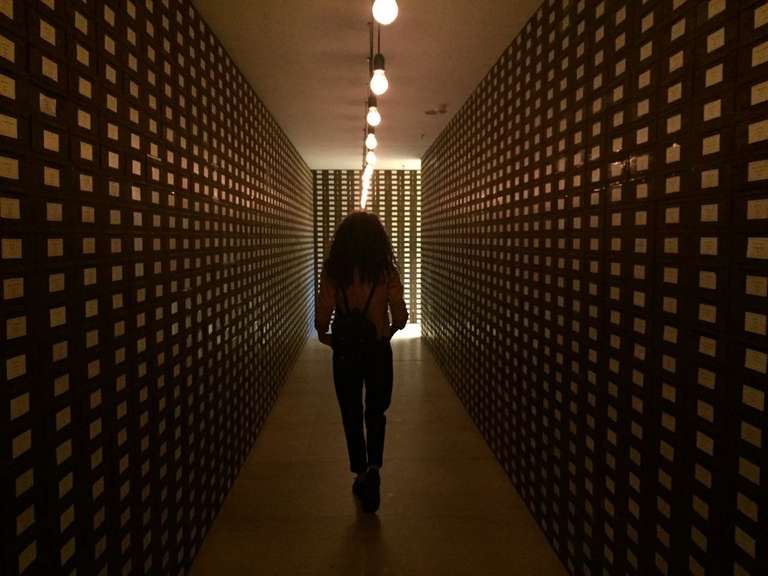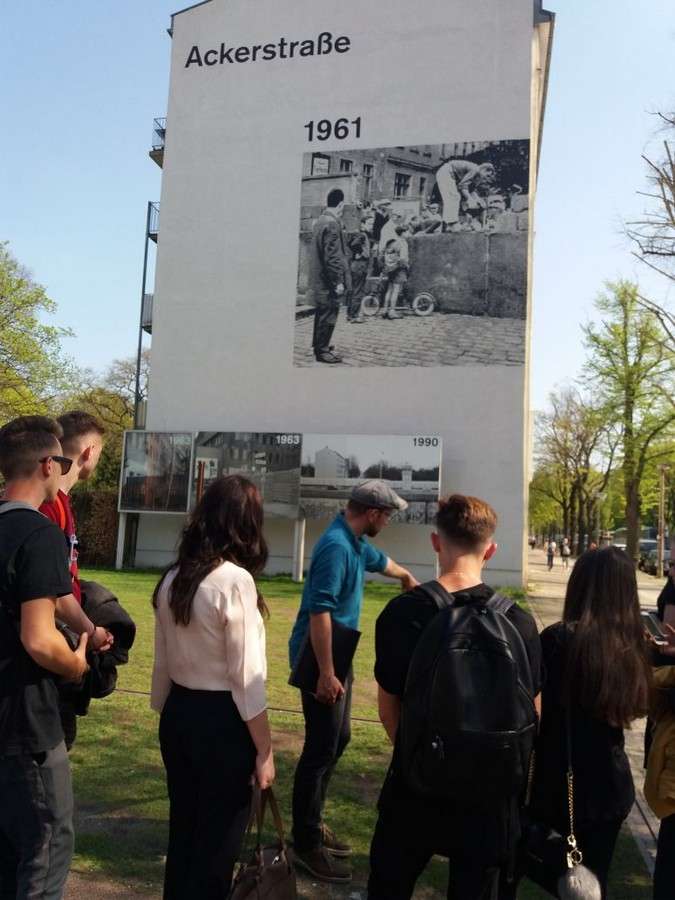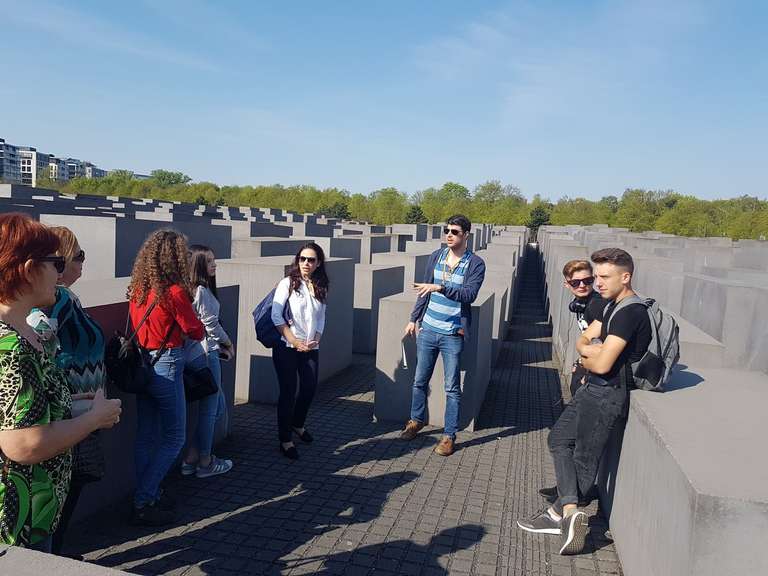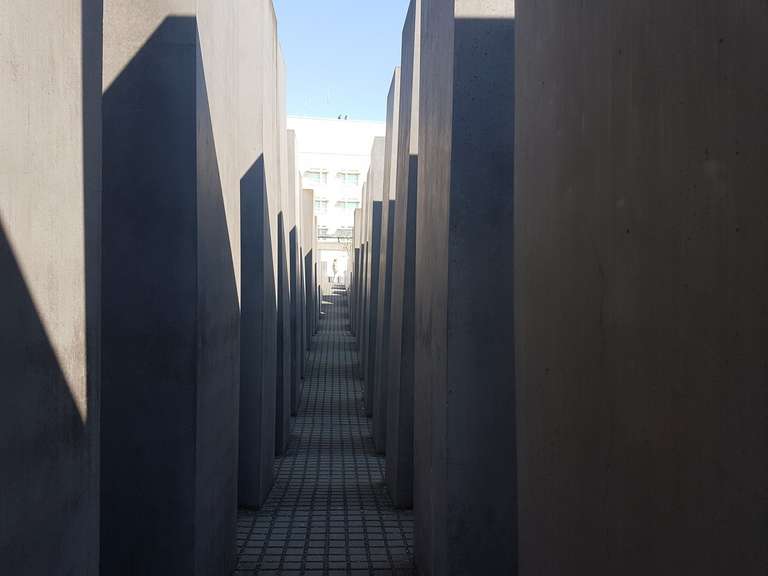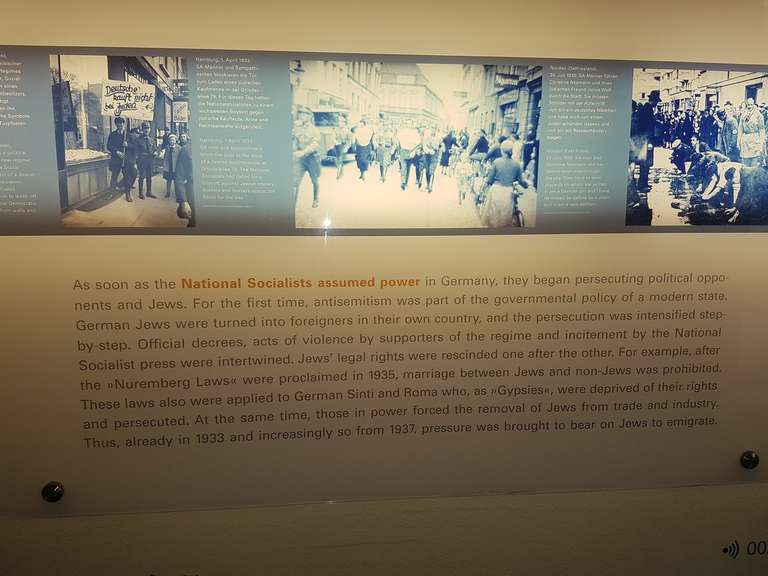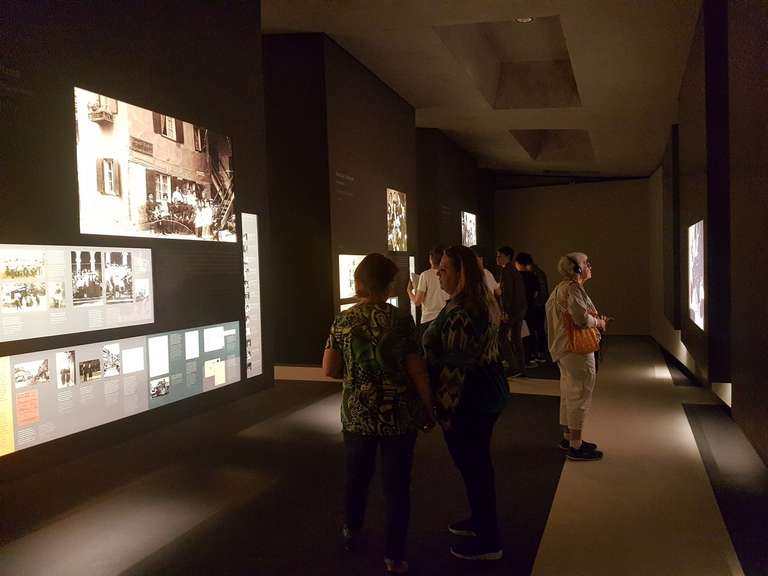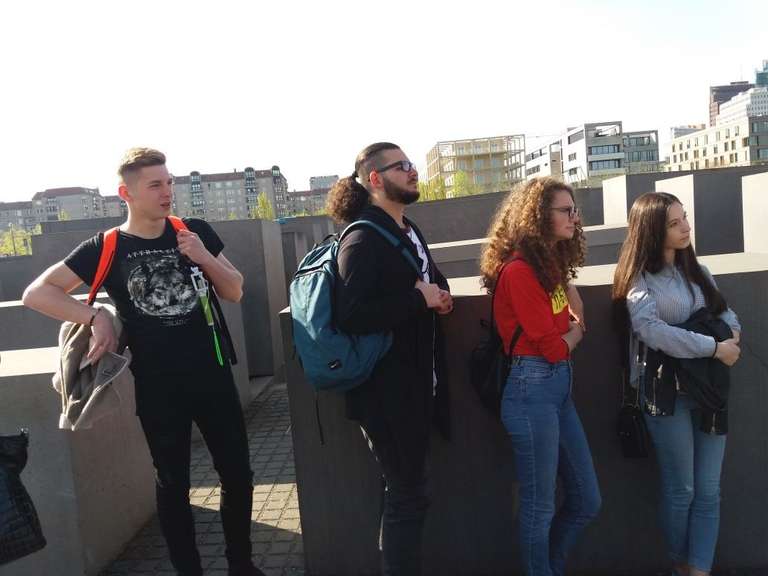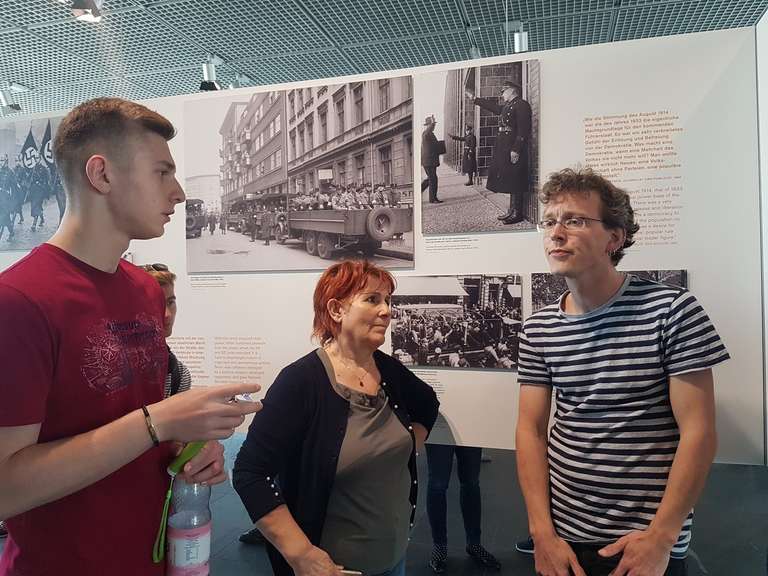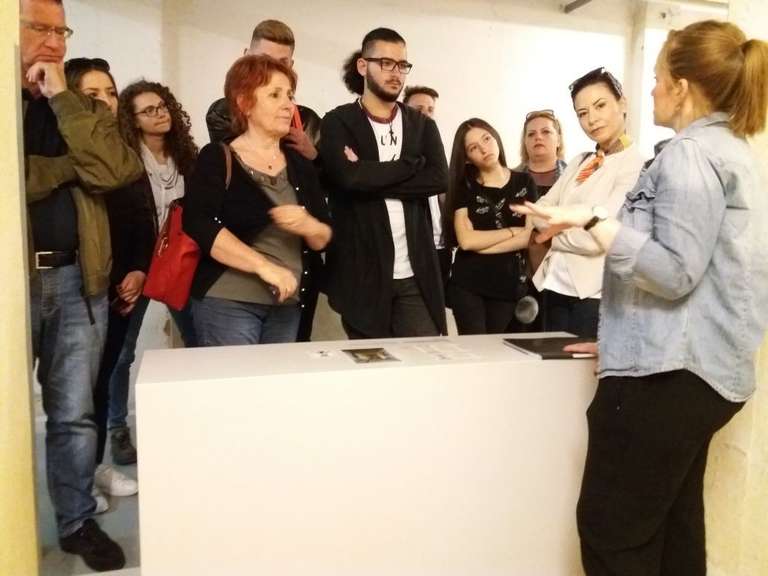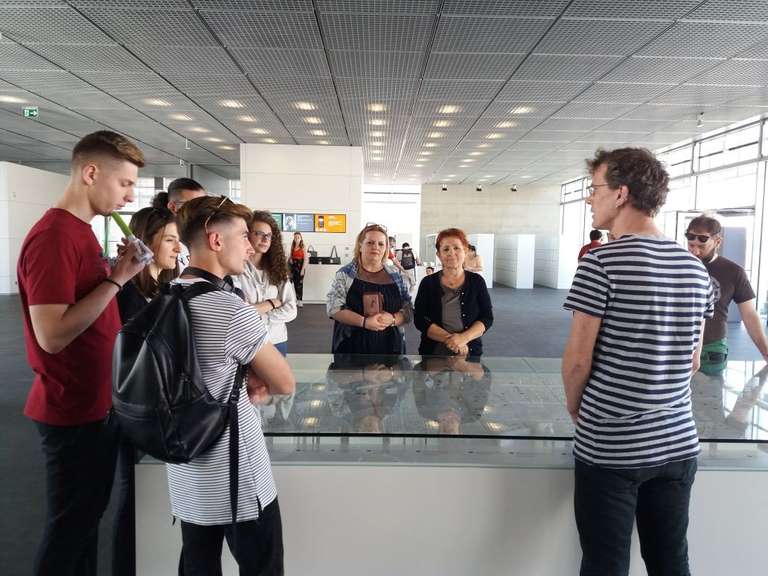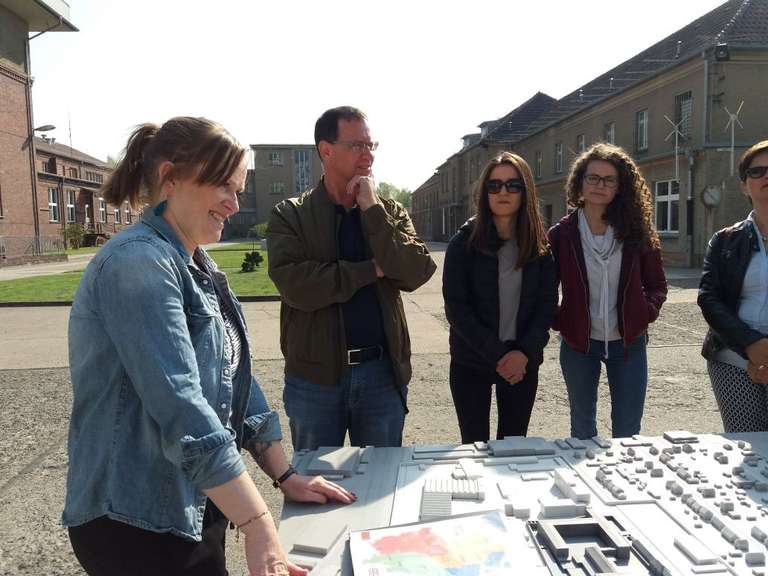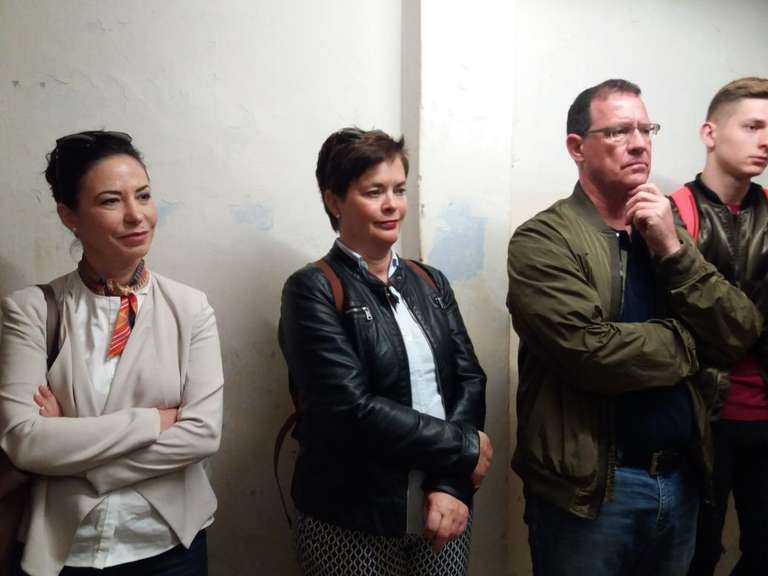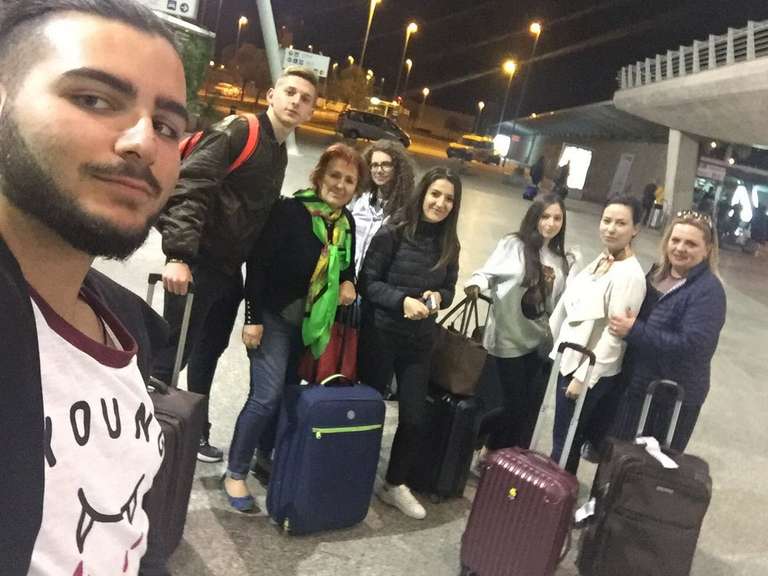"Topography of Terror" in Berlin

On 18 to 21 April 2018, Institute for Democracy, Media & Culture (IDMC) in cooperation with Konrad Adenauer Foundation organized a four-day study trip to sites of memory in Berlin for the 1st prize winners of "Ask Your Grandparents 2" competition.
"Ask Your Grandparents 2" multimedia competition was a collaboration between IDMC and the Albanian History Teachers Association, supported by the Ministry of Education, Sports & Youth, and Konrad Adenauer Foundation which awarded the winners in a special ceremony organized on 23 November 2017. Following the study visit to the sites of memory in Albania for the 2nd prize, 3rd prize, network and consolation prize, IDMC in collaboration with KAS offered as the 1st prize a study trip to sites of memory in Berlin. The winners of the first prize were a group of 5 high school students from "Sami Frasheri" high school in Tirana, Elios Shuli, Marta Gështenja, Gentian Kojeli, Eri Alla, Renis Lami with the creative video "I am…". They were accompanied by IDMC staff, Dr. Jonila Godole and Ms. Matilda Karçanaj; the director of KAS Albania, Mr. Walter Glos; their teacher Ms. Elmira Gjonaj; and the history expert Ms. Fatmiroshe Xhemalaj, at the same time the member of the jury of the competition.
1st Day, 18 April 2018
The winners of the competition arrive in Berlin and meet Mr. Feyerabend, referent of SEE in KAS academy.
After arriving in Berlin the first place winners of the "Ask Your Grandparents 2" competition accompanied by the IDMC staff and the director of KAS Albania, Mr. Walter Glos, were provided with a bus excursion in the city of Berlin. The guide offered them an introduction to the history of Berlin, introducing them to some of the most important historic sites in the city, such as the Berlin Wall, the Berlin Cathedral, the Bebelplatz book burning site, the Faculty of Law, the Brandenburg Gate, the TV Tower, and the French Street and Berlin Victory Column, among others.
In the afternoon, the young adults had the chance to meet with Mr. Florian Constantin Feyerabend, referent for SEE in the KAS Academy in Berlin. The competition winners shared their filming experience with Mr. Feyerabend. Each youth spoke about their personal experience and role in the winning entry for the competition. And, Mr. Feyerabend introduced the young adults to the focus of Konrad Adenauer Foundation's work and why it was important, even for them at KAS, to deal with the past. This discussion also touched on the topic of Albania's EU integration, following the European Commission's recommendation to open accession talks with Albania.
2nd Day, 19 April 2018
The group visits the German Parliament and talks with the deputy of Bundestag, Mr. Thorsten Frei, followed by a visit to the Berlin Wall and the Stasi Museum.
On the second day, the young group from Tirana visited the German Parliament. During their visit to Bundestag, they had the chance to meet and talk with Mr. Thorsten Frei, deputy of Bundestag and reporter for Albania. Mr. Frei informed the young people about Albania's situation in the process of EU integration and Germany's role in facilitating this process.
Mr Frei also emphasized that Albanians should use all of their democratic means – voting and/or protest – to put pressure on their politicians to work harder. The competition winners also learned more about the agendas of German politicians and, above all, how important it was for deputies to meet regularly with their constituents in order to learn more about their constituents' problems. At the end of the meeting, all of the young adults were encouraged to apply for internships in the German Parliament. Following their visit to Reichstagskuppel, the students headed to the Berlin Wall memorial. Mr Frei told the young people:
"Despite the help from Germany in the EU integration process, it is up to the willingness of Albania's political elites to fulfill all the conditions put forward by the EU in order to progress on this path."
Guided along the Berlin Wall memorial, young people learned more about the history of the Germany's division from 13 August 1961 until the fall of the Wall on 9 November 1989. The memorial consists of the last piece of the Berlin Wall, the Chapel of Reconciliation, and the remains of a building which was divided with the balconies in one side of Berlin and the apartment on the other side. Later one, its windows had been closed in order to prevent people from escaping, thus serving as a part of the Berlin wall until the early eighties.
The second day ended with a visit to the Stasi Museum, where the students learned more about how the German State Security Service/Ministry for State Security functioned. The museum is located in the former Stasi building, which made it easier for the young people to grasp the political system of the German Democratic Republic of former East Germany. Visiting the rooms of the Stasi Museum, the young high school students drew comparisons with the Albanian State Security, known as Sigurimi.
3rd Day, 20 April 2018
The winners of "Ask Your Grandparents 2" visit the Holocaust Museum in Berlin.
On the third day, the visit took the winners of "Ask Your Grandparents 2" competition to the Holocaust memorial, known also as the Memorial to the Murdered Jews of Europe. After Adolf Hitler, the former dictator of Germany, took power, Germany took anti-Semitism measures to exterminate the Jews from Germany. These measures also included the persecution and murder of other groups such as Roma and Polish people, homosexuals, disable people, and opponents.
The Holocaust memorial, presented to the public on May 2005, is located in the political part of Berlin, near Bradenburg Gate, in an area measuring 19,000 square meters. It consists of 2,711 concrete blocks, which together commemorate the approximately six million European Jews that were victims of the Holocaust. After being guided through the blocks, young people also visited the exhibition at the underground information center, where they learned more about the National Socialist terror policies from 1933–1945. They visited each of the room and learned the number and names of victims from different European countries as well as their family stories – through interviews with Holocaust survivors and sites of memories in Europe.
4th Day, 21 April 2018
Visit at Berlin Hohenschönhausen Memorial and Topography of Terror Museum.
In the last day of their study visit the group visited firstly Berlin Hohenschönhausen Memorial and then Topography of Terror museum.
During the visit in the Berlin Hohenschönhausen Memorial young people learned about the former political prison of former East German Communist Ministry of State Security and the ways of torture. Being lead by a professional guide the young people learned that the location n had originally functioned as a special Soviet camp at the end of WWII in the Soviet occupied zone. In 1946 it became the central Soviet prison in Germany and functioned like that until 1951, when the Ministry for State Security took control of the prison. After Stasi took over, the prison was expanded and it was used until 1989 as a central detention center, where thousands of political prisoners were interrogated, including almost all of the most famous GDR dissidents. Five years after the fall of Berlin Wall in 1994, it became a memorial. Walking through the area of the former detention center the guide acknowledged the group with the interrogation methods used back at that time by GDR state security service and about the living conditions of the political prisoners.
The last memory site of the study trip that the group visited was the documentation center "Topography of Terror", built on the site of Schutzstaffel central Command, (major parliamentary organization under Adolf Hitler). The headquarters of Gestapo and the Reich Security Main Office (from 1939) were located there. The young group was guided through the permanent exhibition "Topography of Terror: Gestapo, SS and Reich Security Main Office on Wilhelm- and Prinz-Albrecht street," which documents the history of persecution and terror from 1933, when Hitler took power, until 1945. The guide led them through the exhibition, giving the young people more information about the National Socialist takeover of power; the institutions of terror (SS and Police); the terror, persecution and extermination on the Reich territory; and the SS and Reich main security office in occupied countries.

